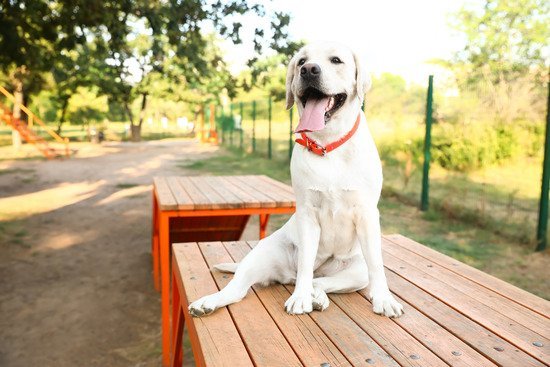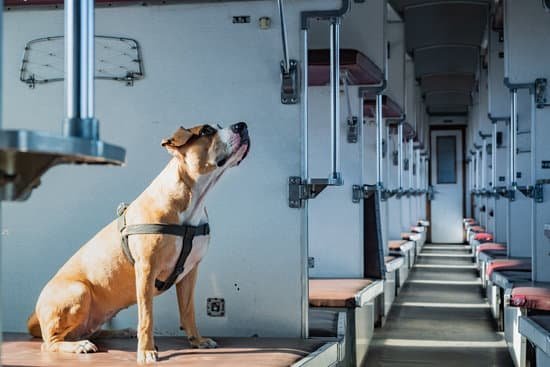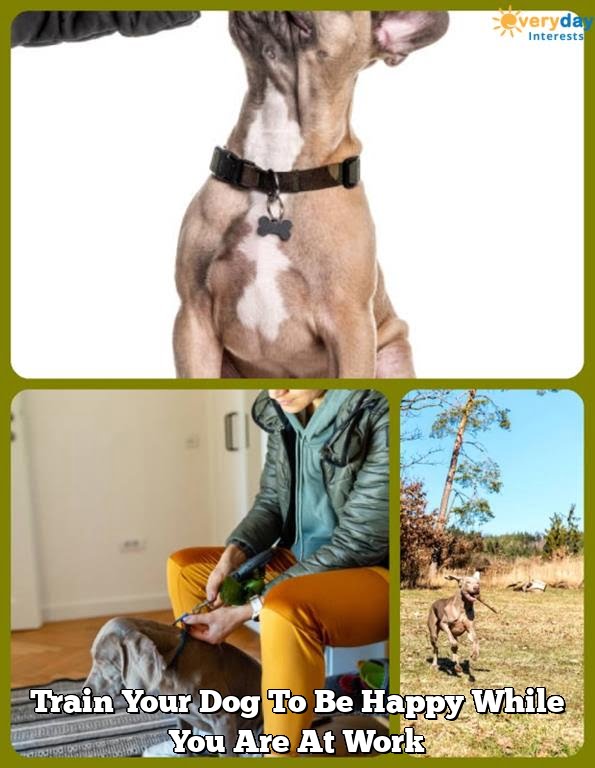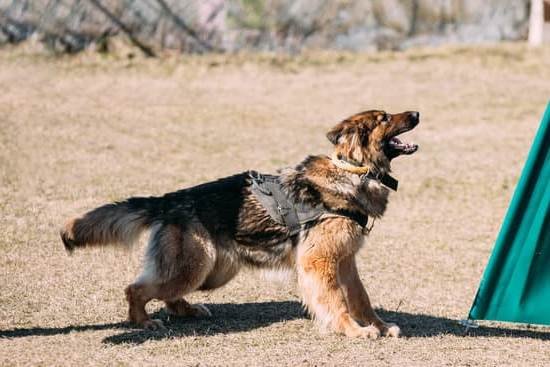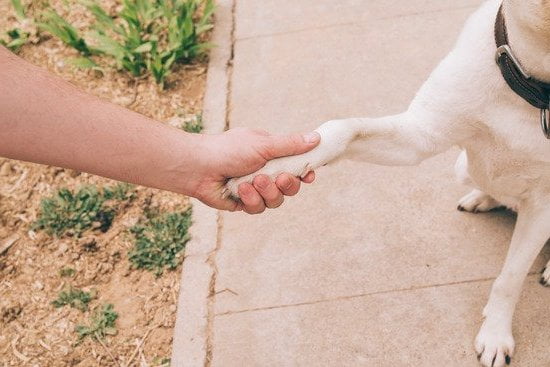Potty training a dog is no easy task, and it becomes even more challenging when you work full-time. Balancing your job responsibilities with the needs of your furry companion can often feel overwhelming, leaving many working dog owners wondering how to potty train their dogs effectively. In this article, we will explore the various strategies and techniques that can help you successfully potty train your dog while maintaining a busy work schedule.
One of the key factors in potty training a dog is consistency and routine. Dogs thrive on structure, so establishing a regular schedule for feeding and potty breaks is crucial. However, when you are away at work for long periods of time, maintaining this consistency can be difficult. We will discuss ways to establish a feeding and potty schedule that maximizes success and ensures your pup understands when it’s time to go outside.
Creating an appropriate living area for your dog is also an important aspect of successful potty training. By adapting your home or apartment to accommodate your dog’s needs, you can limit accidents and encourage proper elimination habits. We will provide tips on preparing your dog’s living area for successful potty training, including crate training as a valuable tool for working dog owners.
By implementing these strategies along with other helpful tips and tricks tailored specifically to working dog owners, this article aims to empower you in effectively potty training your beloved pet. Despite the challenges presented by a busy work schedule, with dedication and consistency, you can successfully teach your canine companion where and when they should do their business.
So let’s dive into the details of how to best approach this task while balancing work commitments in order to create a harmonious living environment for both you and your furry friend.
Understanding the importance of consistency and routine in potty training
Consistency and routine are key components in successfully potty training a dog, especially when you work full-time. Dogs thrive on structure and predictability, and establishing a consistent routine will help them understand when and where they should go potty. Here are some strategies to incorporate consistency and routine into your dog’s potty training:
- Establish a designated potty area: Choose one specific area outside where you want your dog to do their business. Take them to that spot every time they need to relieve themselves. This consistent location will signal to your dog that this is the appropriate place to go.
- Set a regular feeding schedule: Feed your dog at the same times every day. This will help regulate their digestive system, making it easier for you to anticipate when they will need to go potty.
- Create a consistent walking schedule: Take your dog for walks at the same times each day, ideally before and after work. These regular exercise opportunities not only provide an outlet for energy but also encourage your dog to relieve themselves during their designated walk times.
- Use verbal cues: Choose a simple word or phrase, such as “go potty” or “do your business,” and use it consistently when taking your dog out to their designated potty area. Over time, they will associate this cue with going potty and will learn to perform on command.
Regular reinforcement of these routines is essential in helping your dog understand what is expected of them. Consistency may require some adjustments in your own daily schedule, but the benefits of having a fully trained dog outweigh the temporary inconveniences. With patience, dedication, and adherence to a structured routine, you’ll set the stage for successful potty training even while working full-time.
Preparing your dog’s living area for successful potty training
When it comes to potty training a dog, one of the key factors for success is creating a suitable environment in which your furry friend can learn and thrive. By providing an appropriate living area for your dog, you can help facilitate their understanding of where it is acceptable to relieve themselves. Here are some important steps to take when preparing your dog’s living area for successful potty training.
Choosing the right space
First and foremost, it’s important to select an appropriate space within your home where your dog will spend most of their time. This could be a designated room or an area sectioned off with baby gates or exercise pens. The chosen space should be easily accessible to your dog but also easy for you to supervise and clean. It’s crucial that this space is safe and comfortable, providing a clear distinction between living quarters and potty areas.
Puppy-proofing the area
Before bringing your new furry friend into their designated living area, make sure to puppy-proof it thoroughly. Remove any potential hazards such as electrical cords or toxic plants that could harm your dog if chewed on or ingested. Store away personal items that you don’t want your pup getting into, and provide them with appropriate chew toys to redirect their natural instinct to explore through chewing.
Establishing a consistent routine
Consistency is key when it comes to potty training a dog while working full-time. Create a regular feeding schedule for your dog, ensuring they have scheduled bathroom times throughout the day. Dogs are naturally inclined to relieve themselves after eating or waking up from naps, so incorporate these times into their routine. Additionally, take your pup outside for bathroom breaks first thing in the morning and immediately after coming home from work.
By following these steps in preparing your dog’s living area, you can lay the foundation for successful potty training. Remember, patience and consistency are vital during this process. In the next section, we will delve into the valuable tool of crate training for working dog owners and how it can contribute to their potty training efforts.
Utilizing crate training as a valuable tool for working dog owners
Crate training can be a valuable tool for working dog owners when it comes to potty training their furry companions. Crates provide a safe and confined space for dogs, mimicking the den-like environment they naturally seek. This helps with both house training and preventing destructive behaviors while you are away at work.
When using a crate for potty training, it is important to choose the right size crate for your dog. The crate should be large enough for your dog to stand up, turn around, and lie down comfortably, but not so big that they have room to eliminate in one corner and sleep in another.
Dogs generally do not want to soil their sleeping area, so the appropriately sized crate encourages them to hold their bladder and bowels until they are let out.
To introduce your dog to the crate, make it a positive experience by associating it with treats, toys, or feeding time. Place these enticing items inside the crate and let your dog explore at their own pace. It may take some time for them to become comfortable spending extended periods of time in the crate, so start with short increments and gradually increase the duration.
Establishing a consistent schedule is also crucial when utilizing crate training. Take your dog outside to eliminate immediately upon letting them out of their crate in the morning, after meals, and before bed. Use a specific command such as “go potty” or “do your business” to communicate what you want them to do. Reward them with treats and praise when they successfully go outside.
In addition to using crates during work hours, consider using them as part of a nighttime routine as well. Dogs instinctively try to avoid soiling their sleeping areas, so having them sleep in a properly sized crate at night can help reinforce good potty habits.
Utilizing crate training as part of your potty training strategy can greatly increase the chances of success while you are working full-time. Consistency is key, so make sure to stick to a schedule and reinforce positive behavior with rewards. With time and patience, you can potty train your dog successfully even with a busy work schedule.
| Benefit | Description |
|---|---|
| Mimics natural den environment | Crate training provides dogs with a safe and confined space that mimics the den-like environment they naturally seek. This helps with house training and prevents destructive behaviors while owners are at work. |
| Encourages bladder and bowel control | A properly sized crate encourages dogs to hold their bladder and bowels until they are let out. Dogs generally do not want to soil their sleeping area, so they learn to wait until given the opportunity to eliminate outside. |
| Establishes routine and consistency | Crate training helps establish a consistent schedule for potty breaks. Dogs are taken outside immediately upon being let out of the crate in the morning, after meals, and before bed. This routine reinforces desired behavior. |
Establishing a feeding and potty schedule to maximize success
Establishing a feeding and potty schedule is crucial when potty training a dog, especially for working dog owners. A consistent routine helps the dog understand when and where they should go to relieve themselves, making the process more manageable for both the owner and the pet. Here are some tips for establishing an effective feeding and potty schedule to maximize success:
Determine Appropriate Meal Times
It is essential to establish regular meal times for your dog. Choose two specific times during the day when you can comfortably feed them. Consistency in mealtime helps regulate their digestion and predict when they will need to go outside.
Supervise Your Dog After Meals
After each meal, take your dog outside within 15 to 30 minutes as this is typically when they will need to relieve themselves. Keeping a close eye on them during this time increases the likelihood of successful outdoor potty training. Make sure to praise and reward them immediately after they have done their business outdoors.
Schedule Regular Potty Breaks
In addition to after meals, it’s important to take your dog out for regular potty breaks throughout the day. This includes first thing in the morning, before leaving for work, immediately upon returning home, before bedtime, and every few hours in between if possible.
Communicate with Your Dog
Establishing cues or commands associated with going potty can be helpful in reinforcing the desired behavior. Use simple phrases like “go potty” or “do your business” consistently every time you take your dog outside. Over time, they will associate these commands with going to the bathroom and understand what is expected of them.
By following a structured feeding and potty schedule, you create a predictable routine that makes it easier for your dog to grasp where and when they should go potty. Remember to be patient and consistent throughout the process, as it may take some time for your dog to fully adjust to the schedule.
Hiring a dog walker or enlisting the help of a trusted neighbor/friend
One of the key challenges in potty training a dog while working full-time is ensuring that your furry companion gets regular opportunities to go outside and relieve themselves. While it may be difficult for you to personally take your dog out during the workday, hiring a professional dog walker or enlisting the help of a trusted neighbor or friend can be a game-changer.
Hiring a dog walker is an excellent solution for busy individuals who are unable to take breaks from work to let their dogs out. A professional dog walker can come to your home during the day and provide your pup with much-needed exercise and bathroom breaks.
When choosing a dog walker, it’s essential to find someone reliable, experienced, and trustworthy. Reading reviews, asking for recommendations from friends or your veterinarian, and conducting interviews are important steps in finding the right person for the job.
Another option is seeking help from a trusted neighbor or friend who may have flexible hours or work from home. If someone you know lives close by and is willing to assist with potty breaks during their lunch break or throughout the day, it can greatly alleviate some of the stress associated with potty training while working full-time. Make sure to communicate your dog’s schedule, habits, and any specific instructions clearly to ensure consistency.
Finding assistance through either hiring a dog walker or enlisting the help of a trusted neighbor or friend not only helps address potty training needs but also provides social interaction and additional exercise for your pet. This support system allows you to focus on your work responsibilities while still making sure that your furry friend’s bathroom needs are met regularly.
With this extra help, you’ll be closer than ever to successfully potty training your dog while working full-time.
Utilizing indoor potty training options for dogs with limited outdoor access
For dog owners who work full-time or live in apartments without easy outdoor access, indoor potty training options can be a practical solution. While it is ideal for dogs to be able to go outside for their bathroom needs, there are alternatives that can help accommodate their needs and ensure successful potty training.
One option for indoor potty training is the use of pee pads or artificial grass patches specifically designed for dogs. These products provide a designated area within your home where your dog can go to relieve themselves. When starting out with this method, it is important to choose a location that is easily accessible for your dog and easy to clean up.
Another indoor potty training option is a litter box designed for dogs. Similar to how cats use litter boxes, dogs can be trained to use a specific area filled with appropriate litter materials. There are various types of litter available for dogs, including newspaper pellets, wood shavings, or even specialized dog litter. Introducing the litter box gradually and using positive reinforcement techniques will help your dog understand that this is an appropriate place to do their business.
It’s important to note that while these indoor potty training options can be useful, they should not replace regular outdoor bathroom breaks whenever possible. Dogs benefit from fresh air and exercise, so if you’re able to take them outside regularly before or after work, it’s still recommended. However, having an indoor option provides peace of mind and convenience when outdoor access is limited.
To track your dog’s progress with indoor potty training and identify any patterns or accidents, keeping a record or log can be helpful. This allows you to monitor their behavior and make necessary adjustments as needed. Additionally, ensuring the designated indoor potty area is cleaned regularly will help maintain hygiene and prevent any unpleasant odors in your home.
Overall, utilizing indoor potty training options can be an effective way to accommodate the needs of dogs with limited outdoor access while still ensuring successful potty training. Consistency, patience, and positive reinforcement will help establish good habits and set your dog up for success in their potty training journey.
| Indoor Potty Training Options | Description |
|---|---|
| Pee Pads/Artificial Grass Patches | These provide a designated area within your home where your dog can relieve themselves. |
| Dog Litter Box | This option involves using a specific area filled with appropriate litter materials for your dog to use as their bathroom. |
Positive reinforcement techniques for encouraging and rewarding desired behavior
Using treats and praise
One of the most effective positive reinforcement techniques for potty training is to reward your dog for desired behavior. When your dog successfully goes potty outside, immediately give them verbal praise such as “good job” or “good boy/girl.” Additionally, have treats readily available to offer as a reward.
Make sure the treat is something your dog finds highly desirable and only give it to them when they go potty in the appropriate spot. The combination of verbal praise and treats will create a positive association in your dog’s mind and encourage them to repeat the desired behavior.
Utilizing clicker training
Clicker training can be a useful tool in potty training your dog while working full-time. A clicker is a small device that makes a distinct clicking sound when pressed. Begin by associating the clicker with rewards, using the same principles as mentioned above with treats and praise.
Every time your dog goes potty in the appropriate spot, immediately press the clicker and then offer a treat or verbal praise. Over time, your dog will learn to associate the sound of the clicker with receiving a reward, which can help reinforce their understanding of where they should be eliminating.
Creating a consistent routine
Consistency is key when using positive reinforcement techniques for potty training. Establishing a consistent routine will help your dog understand what is expected of them and make it easier for you to reward their good behavior consistently. Set specific times throughout the day when you take your dog outside to go potty and stick to those times as closely as possible.
For example, take your dog out first thing in the morning, after meals, before bed, and at regular intervals during the day. By following a consistent routine, you are providing clear expectations for your dog and increasing their chances of success.
By implementing these positive reinforcement techniques, you can effectively encourage and reward desired behavior in your dog during the potty training process. Remember to have patience and consistency throughout the training journey, as every dog learns at their own pace. With time and effort, you will empower your working dog to become fully potty trained.
Addressing accidents and setbacks
Accidents and setbacks are an inevitable part of the potty training process, especially when you work full-time and may not always be available to supervise your dog. However, it’s important to handle these situations effectively in order to prevent any confusion or regression in your dog’s progress. Here are some tips on how to address accidents and setbacks:
- Remain calm and avoid punishment: It’s essential to remember that accidents happen, and they are not a result of your dog’s intentional misbehavior. Punishing or scolding your dog after an accident can create fear and anxiety, hindering their progress in potty training. Instead, focus on positive reinforcement techniques that encourage desired behavior.
- Clean accidents thoroughly: Properly cleaning up accidents is crucial to prevent your dog from repeatedly eliminating in the same spot. Use an enzymatic cleaner designed specifically for pet messes to eliminate any lingering odor. This will help remove the scent markers that could attract your dog back to the same spot.
- Re-evaluate your routine: Accidents may occur if there is a mismatch between your dog’s potty schedule and your work schedule. Assess whether you need to adjust feeding times or consider hiring a dog walker during longer work hours. Consistency is key in potty training, so make sure you are providing ample opportunities for your dog to relieve themselves at appropriate times.
- Increase supervision: If accidents become more frequent, it may be necessary to increase supervision when you are home. Utilize baby gates or crate-training during periods when you cannot directly supervise your dog. Keeping them confined to a smaller area can help reduce accidents while allowing you to keep a closer eye on their behavior.
- Review training techniques: It’s possible that setbacks occur because of inconsistencies in training methods or signals used with your dog. Take time to review the commands or cues you use during potty training and ensure everyone in the household is using the same language. Clear and consistent communication will help prevent confusion for your dog.
Remember, potty training is a process that takes time and patience. Accidents and setbacks are normal, but with effective handling, they can be minimized. Stay consistent in your training methods, provide plenty of opportunities for your dog to empty their bladder, and offer positive reinforcement when they exhibit desired behavior. With persistence and dedication, you can overcome setbacks and successfully potty train your dog even while working full-time.
Gradual transition from potty pads/in-home options to exclusively outdoor training
As your dog becomes more comfortable with using indoor potty options like potty pads or artificial grass, it is important to begin the gradual transition towards exclusively outdoor training. This transition will help reinforce the desired behavior of eliminating outdoors and reduce reliance on in-home options.
To begin this transition, start by gradually moving your dog’s indoor potty area closer to the door leading outside. This will serve as a visual cue that the ultimate goal is to eliminate outdoors. Additionally, you can also start reducing the size of the indoor potty area over time, encouraging your dog to use only a designated spot.
Once your dog consistently uses the designated area near the door, it’s time to gradually move the potty outside. Start by placing a portion of the indoor potty material outside in the desired elimination spot. This will help familiarize your dog with going in that specific location while still having a familiar scent or surface to associate with elimination.
As your dog becomes more accustomed to eliminating exclusively outdoors, you can gradually reduce or eliminate the use of in-home options altogether. It is important to closely monitor your dog during this transition period and be proactive in taking them outside frequently for potty breaks.
By following these steps and being patient with the process, you can successfully train your dog to eliminate exclusively outdoors even while you are working full-time. Remember to praise and reward your furry friend every time they go outside as positive reinforcement plays a crucial role in shaping their behavior.
| Transition Steps | Description |
|---|---|
| 1 | Move indoor potty area closer to outdoor access |
| 2 | Reduce size of indoor potty area gradually |
| 3 | Place a portion of the indoor potty material outside in the desired elimination spot |
| 4 | Tightly monitor and take dog outside frequently during transition period |
| 5 | Praise and reward your dog for eliminating outdoors as positive reinforcement |
Additional tips and tricks for success in potty training a dog while working full-time
One important tip for successfully potty training a dog while working full-time is to establish a designated potty area outside. This will help your dog understand where they should go to relieve themselves.
Choose a spot in your yard that is easily accessible for both you and your dog, and consistently bring them to this area each time they need to go out. Use verbal cues such as “go potty” or “do your business” to reinforce the behavior you want them to do in this specific area.
Another helpful tip is to create a positive association with going potty outside. Whenever your dog successfully goes in the designated area, make sure to praise and reward them with treats or verbal affirmations. Positive reinforcement will help motivate your dog to continue using the right spot.
Additionally, consider using a potty training aid such as scent-encouraged sprays or artificial grass patches for dogs with limited outdoor access. These options can be placed in an easily accessible indoor space, such as a bathroom or laundry room, and can help simulate the feeling of going outside for dogs who cannot access an outdoor potty area during the day.
Furthermore, it’s crucial to set realistic expectations and have patience throughout the potty training process. Understand that accidents may happen, especially during the initial stages of training. It’s important not to scold or punish your dog for accidents but instead remain calm and clean up any messes promptly. Consistency and routine are key in reinforcing the desired behavior, so stick to your established feeding and potty schedule even on days when you’re particularly busy.
By following these additional tips and tricks, working dog owners can increase their chances of successfully potty training their furry companions while balancing their work commitments. Remember that each dog is unique, so be patient and adjust your strategies accordingly based on their individual needs and progress.
With consistency, positive reinforcement, and proper support systems in place such as hiring a dog walker if needed, you can help your dog become reliably potty trained even when you’re not at home.
Conclusion
In conclusion, potty training a dog while working full-time can be challenging, but it is definitely possible with the right strategies and mindset. By understanding the importance of consistency and routine, preparing your dog’s living area, utilizing crate training, establishing a feeding and potty schedule, and seeking outside help when needed, you can set yourself up for success in potty training your furry companion.
Remember to use positive reinforcement techniques to encourage and reward desired behavior. Dogs respond well to praise, treats, and affection, so be sure to celebrate their successes. However, accidents and setbacks may happen along the way. It’s important not to get discouraged and instead address them effectively by cleaning up accidents properly and reinforcing the desired behavior.
As your dog becomes more accustomed to using indoor potty options like pads or artificial grass, gradually transition them to exclusively outdoor training. This will further reinforce their understanding of where they should go potty.
Lastly, don’t forget that every dog is unique and may require different approaches or additional tips and tricks for successful potty training. Stay patient, consistent, and adaptable throughout the process as you empower yourself as a working dog owner to successfully potty train your furry companion. With dedication and perseverance, both you and your dog will reach this important milestone together.
Frequently Asked Questions
How do I potty train my dog if I work all day?
Potty training a dog when you work all day can be challenging, but it is still possible with some planning and consistency. First, establish a routine by taking your dog outside for bathroom breaks before and after work, as well as during lunch breaks if possible. Remember to praise and reward them when they eliminate outside to reinforce the positive behavior. Consider crate training your dog as it can help with potty training while you’re away.
Create a comfortable space with their bed, toys, and water bowl inside the crate, making sure it is not too large for them to wander around freely. Dogs naturally avoid soiling their living area, so this can encourage them to hold it in until you’re home. Lastly, consider enlisting the help of a trusted neighbor, friend or hired pet sitter who can stop by midday to let your dog out for a potty break.
Can you potty train a puppy if you work?
Yes, it is definitely possible to potty train a puppy even if you work outside of the home. The key is maintaining consistency and establishing a routine that works for both you and your puppy’s needs. Start by setting up a designated potty area outdoors where you want your puppy to eliminate. During the times when you’re at home, take your puppy outside regularly (every 1-2 hours) and give them plenty of opportunities to use that designated area.
Use positive reinforcement techniques such as praise or treats when they successfully go potty outdoors. Since you’ll be away from home during the day due to work, consider crate training your puppy or confining them in an enclosed space with access to their designated potty area while you’re gone. This helps prevent accidents inside the house and teaches them to hold it until they have the opportunity to go outside again.
How do you train a puppy to work 12 hour shifts?
Training a puppy to handle long 12-hour shifts requires careful planning and adaptation of their routine. Firstly, make sure that prior basic obedience training has taken place so that your puppy knows and understands commands like sit, stay, and come. This will help in managing them during the long work hours. Gradually increase the duration of time you spend away from your puppy, preparing them for the extended periods when you’re at work.
It’s important to hire a dog walker or pet sitter to come by mid-shift to let your puppy out for potty breaks and exercise. Provide interactive toys or treat-dispensing puzzles to keep them mentally stimulated during those long hours without your presence. Set up a designated sleeping area where your puppy can rest comfortably during their downtime while you’re away. Remember to spend quality time with your puppy before and after shifts so they still receive social interaction and bonding despite the long hours apart.

Welcome to the blog! I am a professional dog trainer and have been working with dogs for many years. In this blog, I will be discussing various topics related to dog training, including tips, tricks, and advice. I hope you find this information helpful and informative. Thanks for reading!

